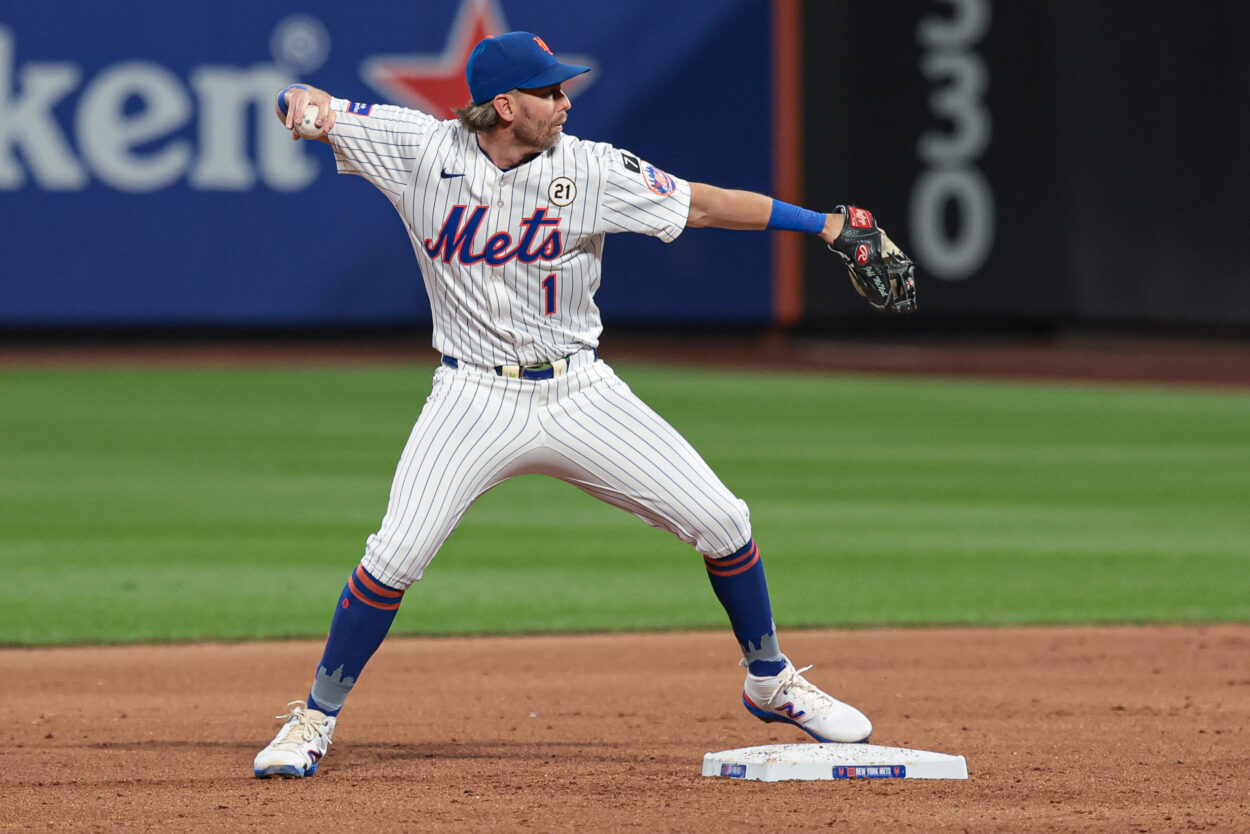
The ink wasn’t even dry on the Brandon Nimmo trade before the logical next question started buzzing around New York.
If the Mets just acquired Marcus Semien to lock down second base, surely Jeff McNeil was packing his bags next, right? It felt like the inevitable second domino in a roster purge. You trade the expensive outfielder, you bring in the expensive infielder, and you ship out the redundant veteran to balance the books. That is how Baseball GM 101 usually works.
But David Stearns isn’t playing by the standard textbook.
Despite the rumors and the armchair GM proposals shipping McNeil out of town for a bag of baseballs, the President of Baseball Operations made it clear that the Flying Squirrel isn’t going anywhere. And honestly? He shouldn’t.

The Value of the Swiss Army Knife
Trading Nimmo to the Texas Rangers was a massive culture shock, essentially swapping one heavy contract for another in Semien. But in doing so, the New York Mets actually created more of a need for McNeil, not less.
Stearns addressed the situation head-on, shutting down the speculation that McNeil was just a distressed asset waiting to be moved.
“I talked to Jeff McNeil yesterday,” Stearns said. “He wants to be a part of this, he understands his positional value.”
That phrase—”positional value”—is the key to the whole operation. With Semien taking over everyday duties at second base, McNeil doesn’t become a benchwarmer. He becomes the ultimate safety valve. He can play second when Semien needs a DH day. He can slide over to second base.
Most importantly, with Nimmo gone, McNeil can handle all three outfield positions. You don’t trade a guy who can plug five different holes on the diamond unless you are absolutely blown away by an offer.
Paying for the Floor, Not the Ceiling
Let’s talk about the money, because that is where the friction lies.
McNeil is set to make $15.75 million this season. Is that a little rich for a utility player? Maybe. But look at what he actually provided over 122 games last year:
- Slash Line: .243/.335/.411
- Production: 12 home runs and 54 RBIs
- Discipline: A tidy 11.9% strikeout rate paired with a 10.6% walk rate
He isn’t the batting champion we saw a few years ago. That version of McNeil might be gone. But he is still a league-average offensive player who puts the bat on the ball and refuses to strike out. In an era where everyone is swinging from their heels and missing, having a guy who can annoy a pitcher for eight pitches and draw a walk has tangible value.

The 2026 Outlook
The contract situation essentially solves itself. McNeil has one guaranteed year left. The Mets hold a club option for 2027 at the same $15.75 million price tag, but let’s be real. Unless McNeil suddenly hits .320 again, the team is likely going to decline that option when he is 35 years old.
That makes this upcoming season a contract year for him.
The Mets need depth. They need insurance. If an outfielder pulls a hamstring in May, you don’t want to be scrambling for a Triple-A replacement; you want to just slide McNeil into left field and keep it moving. Stearns recognizes that stability is worth the salary cap hit.
Expect McNeil to be on the roster on Opening Day. He won’t be the headline star, and he might not even have a fixed position, but he is the glue guy that keeps the roster flexible. Sometimes the best moves are the ones you don’t make. Keeping McNeil is the safe, smart play.
